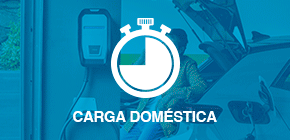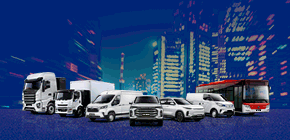Written by Julia Poliscanova, Senior Director, Vehicles and Emobility of Transport & Environment.
To meet our climate goals and be at zero in 2050, the last new car (or van) with any CO2 emitting engine – be it gas, diesel or hybrid – should be sold no later than 2035. But it is not just a climate essential, it is an industrial necessity too. Major economies such as the UK and Canada and even large carmakers such as VW all plan to go 100% electric by that date. The EU cannot afford to lag behind in this global race to zero emissions, and the current proposal will ensure all EU member states and carmakers transition on time.
The trajectory to get there matters. The 55% CO2 target means half of cars sold in 2030 across the EU will be battery electric (less if some of them are hybrids). This is considerably less than the two-thirds battery electric sales needed to be on a cost-effective path to full electric by 2035. Many current loopholes remain, such as CO2 credits for things like efficient lights or more lenient targets for heavier cars. So while better than the current target, the 55% goal will be less than that in reality.
On costs and volumes…
Produced in small numbers – just enough to allow car makers meet the CO2 targets until now – electric cars are still expensive. Carmakers need to move to mass production to drive costs down, just as Henry Ford did with petrol cars at the beginning of the last century. Except the conveyor belts of the 1910s have been replaced by platforms dedicated to EVs and battery gigafactories. Analysis shows that if we continue to ramp up electric car volumes, these will be cheaper to buy than petrol in just six years time.
That requires increasing the CO2 targets from 2025 onwards – not only in 2030 – to make them accessible and affordable to all Europeans from Porto to Poznań. Regrettably the Commission has only increased the 2030 target, meaning little progress in the next 9 years. Higher retail prices, slower uptake of charging infrastructure, and worse, supply from outside Europe will dominate if domestic supply is insufficient.
Some electric cars are more equal than others
But what electric cars will Europeans buy? We have the real deal: battery electric. And we have a transitional solution: plug-in hybrids, that in reality are driven on a petrol engine most of the time but tout low CO2 emissions on paper. Europe is where most of these “fake electrics” are sold today because they offer easy compliance with the current CO2 standards.
By not reforming the way credits are given to plug-in hybrid cars until 2030, the Commission has decided to continue over-rewarding them for another decade – way longer than their transitional status justifies. This is not just a question of climate credibility as many emit 3-4 times their official CO2 results, but also brings into question our regulatory standing. Europe is still living the aftermath of the Dieselgate emissions scandal with major carmakers still being fined for colluding to delay cleaner vehicles. There is no place for fake climate solutions: that means no hybrids after 2035, and no bad hybrids already today.
Henry Ford once said: “Coming together is the beginning. Keeping together is progress. Working together is success”. The Commission’s ambition for 100% zero emissions sales across Europe marks a great beginning. But governments, European parliamentarians and industry must now keep and work together to make this into the final law to democratise electric cars for all Europeans. That means higher CO2 standards from 2025 onwards – not just in 2030 – and doing away with fake solutions.





















